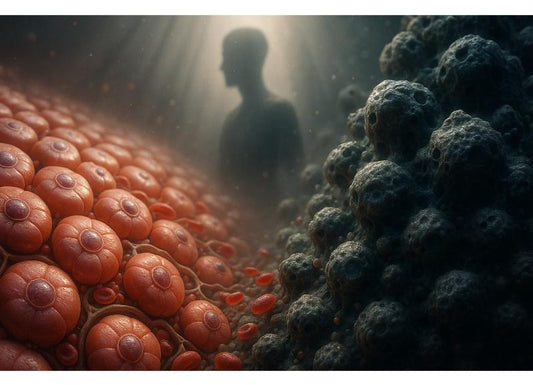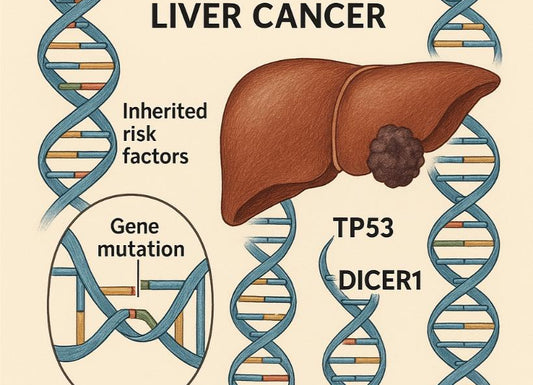Can Women Get Kidney Stones? Understanding Risk, Symptoms, and Prevention
 Written By
Abel Tamirat, MD
Written By
Abel Tamirat, MD

Kidney stones are often thought of as a men’s health problem, but research shows that women can also get kidney stones — and their risk is rising. Over the past two decades, the number of women developing stones has nearly doubled, particularly among those aged 30 to 50.
This article explains why kidney stones occur in women, the symptoms to watch for, and how to prevent them through simple lifestyle and dietary changes.
What Are Kidney Stones?
Kidney stones are hard, crystal-like deposits that form inside the kidneys when certain minerals and salts become too concentrated in the urine. These minerals — such as calcium, oxalate, and uric acid — can clump together, forming small stones that may stay in the kidneys or travel through the urinary tract.
If a stone blocks urine flow, it can cause severe pain and potentially lead to infection or kidney damage if untreated.
Can Women Get Kidney Stones?
Yes, women can and do get kidney stones. While men historically had higher rates, that gap is narrowing. Women’s risk increases due to changes in diet, hydration habits, hormonal fluctuations, and certain medical conditions.
According to the National Kidney Foundation, 1 in 10 women will experience a kidney stone at some point in their life.
Read on in our UTI testing guide to better understand symptoms and treatment.
Why Women Are at Risk
Several factors can increase a woman’s likelihood of developing kidney stones:
1. Dehydration
Women who drink less water or lose fluids through exercise, heat, or illness produce more concentrated urine — a key risk factor for stone formation.
2. Diet High in Sodium or Animal Protein
Eating too much salt or red meat can raise calcium and uric acid levels in the urine, encouraging stone formation.
3. Urinary Tract Infections (UTIs)
Women are more prone to UTIs due to their shorter urethra. Recurrent or untreated infections can lead to struvite stones, a type of kidney stone linked to bacteria.
4. Hormonal Changes
Estrogen influences how calcium and oxalate are processed. Menopause, pregnancy, or use of certain birth control methods can slightly alter stone risk.
5. Obesity and Metabolic Disorders
Being overweight or having insulin resistance changes urine chemistry, increasing the likelihood of stones.
6. Family History
If a close relative has had kidney stones, your own risk is higher.

Common Symptoms of Kidney Stones in Women
Kidney stones cause similar symptoms in both men and women, but women may sometimes confuse the pain with menstrual cramps, pelvic pain, or urinary infections.
Common symptoms include:
-
Sharp pain in the side, back, or lower abdomen.
-
Pain that radiates to the groin area.
-
Frequent or painful urination.
-
Blood in the urine (pink, red, or brown discoloration).
-
Cloudy or foul-smelling urine.
-
Nausea or vomiting.
-
Fever or chills if infection is present.
If pain is severe or accompanied by fever, seek medical attention immediately, as this could signal an infection or blocked urinary flow.
Read on in our article about glucose in urine to learn about causes and symptoms.
Diagnosis

If a doctor suspects kidney stones, they may order:
-
Urinalysis: Checks for blood, infection, and crystal fragments.
-
Imaging tests: Such as CT scans, ultrasounds, or X-rays to locate stones.
-
Blood tests: Measure calcium and uric acid levels.
Types of Kidney Stones in Women
The main types include:
-
Calcium oxalate stones: The most common type; caused by high calcium and oxalate levels.
-
Struvite stones: Often linked to chronic urinary infections.
-
Uric acid stones: Develop when urine is too acidic.
-
Cystine stones: Rare and caused by a genetic disorder.
Understanding the stone’s type helps guide prevention strategies.
Treatment Options
Treatment depends on the stone’s size, type, and location.
1. Small Stones (<5 mm):
Often pass naturally with increased hydration and pain relief. Doctors may recommend:
-
Drinking 2–3 liters of water per day.
-
Taking prescribed pain relievers.
-
Using medications such as tamsulosin to relax the urinary tract.
2. Large Stones (>5 mm):
May require medical procedures such as:
-
Shock wave lithotripsy (SWL): Breaks stones into smaller fragments.
-
Ureteroscopy: Removes stones with a small scope.
-
Percutaneous nephrolithotomy: Surgical removal for large or complex stones.
Read on in our overview of the Ribbon Checkup urine test to see how home testing can support your health.
Preventing Kidney Stones in Women

Kidney stones are preventable for most women. Here are key strategies to reduce your risk:
1. Stay Hydrated
Drink enough water to produce clear or light-yellow urine. Aim for 8–10 cups daily, or more in hot weather or during exercise.
2. Reduce Salt Intake
Too much sodium raises calcium levels in urine. Avoid processed foods, canned soups, and fast food.
3. Limit Animal Protein
Reduce consumption of red meat, poultry, and eggs, which increase uric acid levels.
4. Eat Calcium-Rich Foods (But Avoid Supplements)
Calcium from food binds with oxalate in the intestines and prevents stone formation. Choose low-fat dairy, leafy greens, and almonds.
5. Avoid High-Oxalate Foods (in Moderation)
If you form calcium oxalate stones, limit foods like spinach, beets, nuts, and chocolate.
6. Manage Weight and Blood Sugar
Obesity and diabetes increase stone risk. Maintaining a healthy weight through balanced diet and exercise helps.
7. Treat UTIs Promptly
Recurrent infections can lead to struvite stones. Early treatment reduces that risk.
Pregnancy and Kidney Stones
Kidney stones during pregnancy can be especially painful and challenging. Hormonal changes and reduced urine flow increase risk.
If a pregnant woman develops kidney stones, treatment focuses on pain control, hydration, and ultrasound monitoring. Surgical options are limited during pregnancy but may be considered if obstruction occurs.
When to See a Doctor
Seek immediate care if you experience:
-
Severe flank or abdominal pain.
-
Blood in urine.
-
Fever, chills, or nausea.
-
Difficulty urinating.
These may indicate a stone blockage or infection requiring urgent treatment.
Read on in our full guide to at-home liver tests to learn what your results really mean.
The Bottom Line
Yes, women can get kidney stones — and their risk is growing. While genetics and hormones play a role, simple steps such as staying hydrated, limiting salt, eating a balanced diet, and treating infections early can dramatically lower your risk.
If you’ve had a stone before, your doctor can perform a metabolic evaluation to identify causes and tailor prevention strategies.
Your kidneys are resilient — with the right care, you can protect them for life.
Want to check your kidney health from home?
You can take an at-home kidney function and urinary health test through Ribbon Checkup and get results instantly.
Related Resources
Want to dive deeper into kidney health? Check out these helpful reads:
-
The Complete Guide to At-Home Kidney Function Tests – Stay on top of kidney health with simple home testing.
-
How Long Do Kidney Stones Last? Must Know – Get clarity on how long kidney stones typically last.
-
What Can Mimic Kidney Stone Pain? – Learn about other conditions that cause similar pain.
References
Cleveland Clinic. (n.d.). Kidney stones: Causes, symptoms, diagnosis & treatment. https://my.clevelandclinic.org/health/diseases/15604-kidney-stones
Gillams, K., et al. (2021). Gender differences in kidney stone disease (KSD). Current Urology Reports, 22(12), 1–8. https://link.springer.com/article/10.1007/s11934-021-01066-6
Mayo Clinic. (n.d.). Kidney stones – Symptoms and causes. https://www.mayoclinic.org/diseases-conditions/kidney-stones/symptoms-causes/syc-20355755
Melbourne Urology Centre. (n.d.). Kidney stone symptoms in female patients. https://melbourneurologycentre.com.au/kidney-stone-symptoms-female-patients/
National Kidney Foundation. (n.d.). Six easy ways to prevent kidney stones. https://www.kidney.org/kidney-topics/six-easy-ways-to-prevent-kidney-stones
NHS. (n.d.). Kidney stones: Prevention. https://www.nhs.uk/conditions/kidney-stones/prevention/
University of California, Davis Health. (2024). What causes kidney stones and ways you can try to avoid them. https://health.ucdavis.edu/blog/cultivating-health/what-causes-kidney-stones-and-ways-you-can-try-to-avoid-them/2024/10
Urology Times. (2025). Kidney stone prevalence is increasing in women, study findings show. https://www.urologytimes.com/view/kidney-stone-prevalence-is-increasing-in-women-study-findings-show
Utah Health. (2025). How diet and lifestyle affect your risk for kidney stones. https://healthcare.utah.edu/the-scope/health-library/all/2025/09/how-diet-and-lifestyle-affect-your-risk-kidney-stones
Ferraro, P. M., et al. (2022). Factors associated with sex differences in the risk of kidney stones. Journal of Nephrology, 35(1), 123–134. https://pmc.ncbi.nlm.nih.gov/articles/PMC9869853/

Dr. Abel Tamirat is a licensed General Practitioner and ECFMG-certified international medical graduate with over three years of experience supporting U.S.-based telehealth and primary care practices. As a freelance medical writer and Virtual Clinical Support Specialist, he blends frontline clinical expertise with a passion for health technology and evidence-based content. He is also a contributor to Continuing Medical Education (CME) programs.



